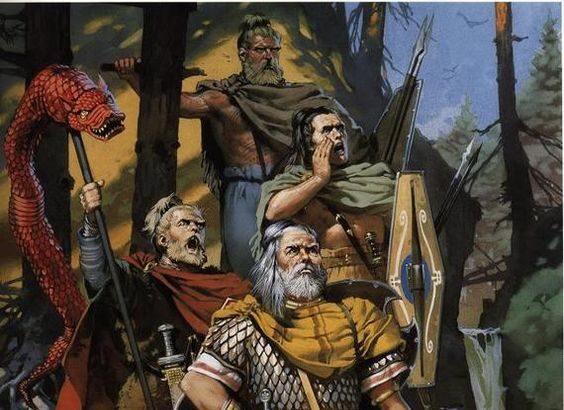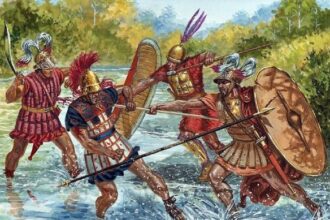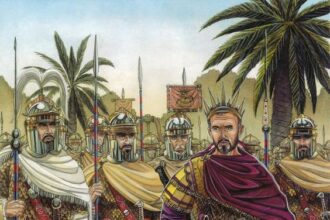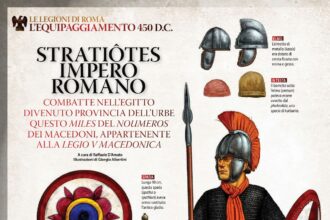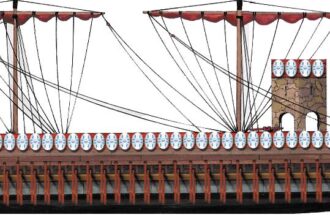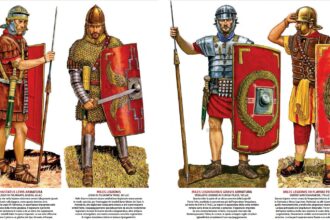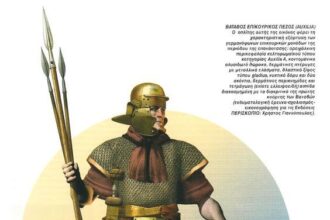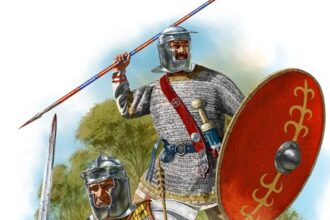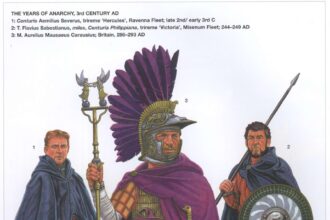Newsletter
Get the latest from Weapons and Warfare right to your inbox.
Follow Us
Explore
Roman
Drusus the Commander II
Chatti Germanic Tribe | Northern Germanic Tribes: Cherusci, Jutes, Saxons. Early Germanic warriors either first century BC or AD. The Germans east of the Rhine had a fearsome reputation and constantly waged war on their Gallic neighbours. The Gauls who lived close to the German border were considered to be the most hardened of the Gallic peoples as a result.…
Most Recent
Roman Emperor Avitus (9 July 455–17 October 456)
Italy was ripe for the taking, but Avitus, the Visigoths, and the Gallic Field Army did not march straight into Rome, because, according to Sidonius (Pan.Av. 589–90), Avitus recovered the two Pannonias for the Empire at the very beginning of his rule. This means that Avitus advanced first against the…
CAPE ECNOMUS
In the 3rd century BC, Rome was not a naval power, and had little or no experience in war at sea. Before the First Punic War, the Roman Republic had not campaigned outside the Italian Peninsula. The Republic’s military strength was on land, and her greatest assets were the discipline…
Roman Military Forces – Imperial Period I
The legion of the Imperial period, which had developed from the legion of the Marian reforms was, tactically and administratively, a self-contained military organization. Internally, the legion was divided in many ways. Duty rosters and administrative procedures were subject to strict regulations, as well as the complicated principles of promotion…
Roman Military Forces – Imperial Period II
Warrior auxiliary cohort of Batavia , the second half of the 1st century AD. Batavian auxiliary cavalry – Pablo Outeiral Auxiliaries (auxilia) About the same strength as the legions, there was a second part of the Roman army, the so-called auxilia or auxiliary troops (Kraft 1951; Spaul 1994 and 2000).…
New Strategies of the Third Century Roman Empire I
‘Posterity, which experienced the fatal effects of his maxims and example, justly considered as the principle author of the decline of the Roman Empire.’ Edward Gibbon, The Decline and Fall of the Roman Empire Historians have argued for decades that Septimius Severus not only contributed to the decline of the…
New Strategies of the Third Century Roman Empire II
Cavalry Strike Force It has long been thought that Valerian’s son, Gallienus (reigned 260–268), created a powerful new, mobile and independent cavalry force that presaged the cavalry-dominated field armies of the fourth century. The new cavalry unit was named the equites Dalmatae and was recruited from the province of Dalmatia…
Most Popular
Etruscan Warriors
1. EARLY VILLANOVAN CULTURE, 9th–8th CENTURIES BC.(1) Leader with war-chariot, Tarchuna area. The early example…
The Shadow of Rome
King Philip V, and Amyntas, Son of Alexandros, 197 BC Battle of Cynoscephalae When the…
The Sixth-Century Army of Justinian
The sixth-century army of Justinian’s era, like its earlier counterparts, was an entirely professional force,…
Sertorian War (80-72 B. C. E.)
Sertorius was a disaffected Roman who fought successfully against Sulla and Pompey. He was a…
